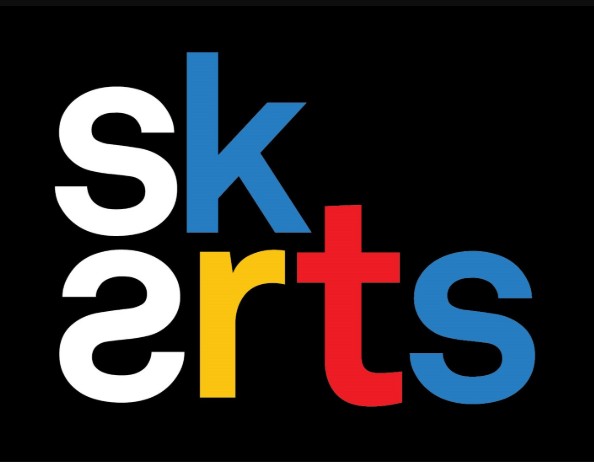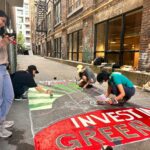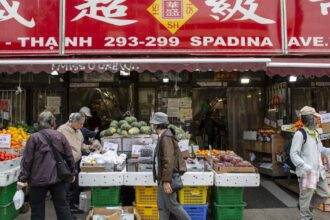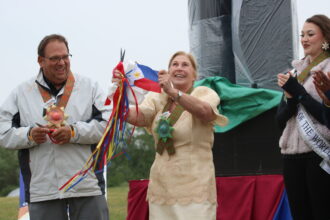As the leaves begin their annual transformation, a different kind of change is sweeping across Canada. In communities large and small, from coast to coast, Culture Days 2025 has officially launched, bringing with it a kaleidoscope of artistic expression, cultural celebration, and community connection that defines this uniquely Canadian festival.
This year’s nationwide celebration, running until October 26th, marks a significant milestone as Canadians emerge from recent years of disconnection with a renewed appreciation for the arts as a binding social fabric. The festival’s theme, “Creating Bridges,” couldn’t be more timely, emphasizing how cultural experiences can connect us across differences while celebrating our distinct identities.
“What makes Culture Days special is that it democratizes art,” explains Marie Lapointe, one of this year’s festival coordinators in Montreal. “We’re taking creativity out of galleries and theaters and bringing it directly to the people, making cultural experiences accessible to everyone regardless of background or circumstance.”
This accessibility manifests in thousands of free events ranging from interactive art installations to indigenous storytelling sessions, film screenings, culinary workshops, and musical performances that transform public spaces into vibrant cultural hubs. In Regina, for instance, Victoria Park has been reimagined as an outdoor gallery featuring works from both established artists and local students, creating an intergenerational dialogue through visual arts.
The festival has evolved significantly since its inception, with digital components now complementing physical gatherings. Virtual workshops allow Canadians in remote communities to participate, while livestreamed performances ensure that mobility challenges or geographic isolation don’t prevent anyone from experiencing the rich cultural offerings.
What distinguishes Culture Days from other arts festivals is its participatory nature. Rather than positioning attendees as passive consumers, many events invite active engagement. In Toronto’s Distillery District, visitors aren’t just viewing art—they’re creating it alongside professional artists in collaborative murals that will eventually adorn community centers throughout the city.
The economic impact shouldn’t be overlooked either. A 2023 study by the Canadian Arts Council found that cultural events like Culture Days generate approximately $3.50 in local economic activity for every dollar invested. Small businesses surrounding festival venues report increased foot traffic, while emerging artists gain vital exposure to wider audiences.
“This isn’t just about celebrating culture for culture’s sake,” notes Winnipeg-based anthropologist Dr. James Wilson. “These festivals strengthen social cohesion and build community resilience. When people create together, they form connections that extend far beyond the event itself.”
Perhaps most encouraging is the festival’s growing appeal among younger Canadians. With Generation Z showing unprecedented interest in local culture and sustainable community initiatives, Culture Days has seen a 22% increase in attendance among 18-25 year olds compared to pre-pandemic figures. Programming specifically designed to appeal to digital natives—including augmented reality art hunts and TikTok dance workshops—is bringing fresh energy to traditional cultural expressions.
Indigenous perspectives form a central pillar of this year’s programming, with First Nations, Métis, and Inuit artists leading workshops on traditional and contemporary practices. In Vancouver, Coast Salish artists are guiding participants through the creation of traditional wool weavings, while simultaneously discussing how ancient techniques remain relevant in addressing modern environmental challenges.
The festival is not without its challenges, however. Organizers acknowledge the ongoing struggle to reach truly diverse audiences and to ensure that cultural offerings represent the full spectrum of Canadian identity. Critics have noted that certain communities remain underrepresented, particularly newcomer populations from regions like West Africa, the Caribbean, and Southeast Asia.
As the sun sets on opening weekend events, the true success of Culture Days will be measured not in attendance figures or economic impact, but in the lasting connections formed between strangers who discovered shared humanity through cultural expression. When we create together, we remember what binds us rather than what divides us—a lesson particularly valuable in our increasingly fractured social landscape.
For those who haven’t yet experienced this year’s offerings, there’s still plenty of time to participate. Whether you’re a dedicated arts patron or someone who hasn’t set foot in a gallery since elementary school field trips, Culture Days invites you to rediscover the transformative power of creativity in community.
After all, culture isn’t something that exists only in designated spaces or special occasions—it’s the living, breathing expression of who we are as Canadians. And in these autumn days of 2025, that expression has never been more vibrant, diverse, or necessary.
For more on cultural trends and expressions, visit our CO24 Culture section, or explore changing social dynamics in our CO24 Trends coverage.
















